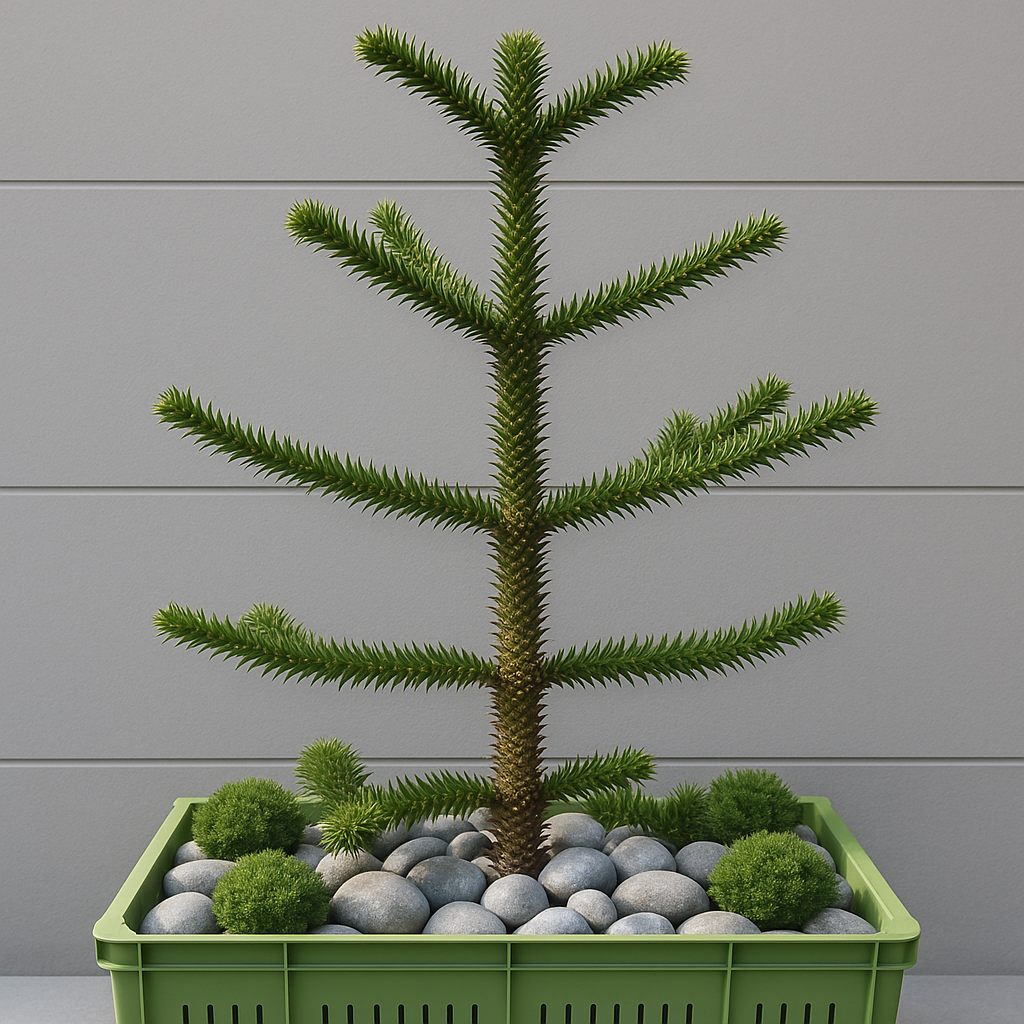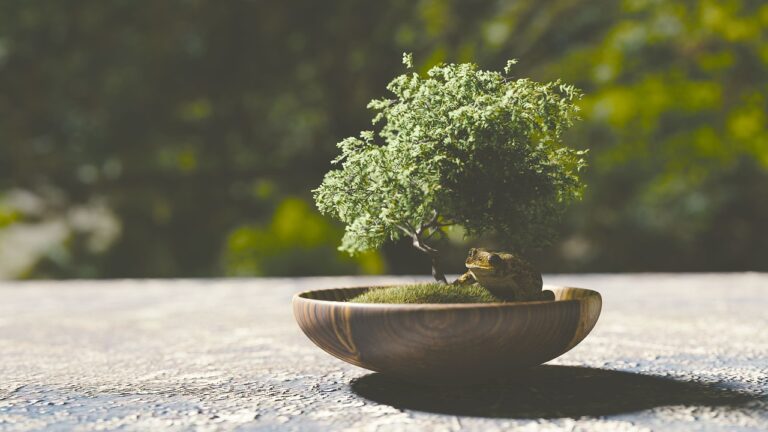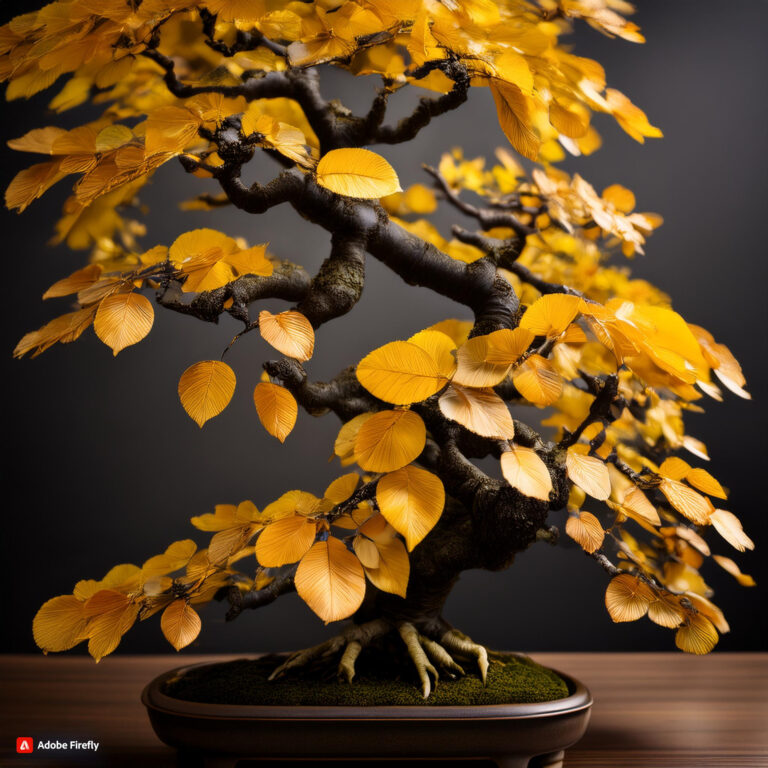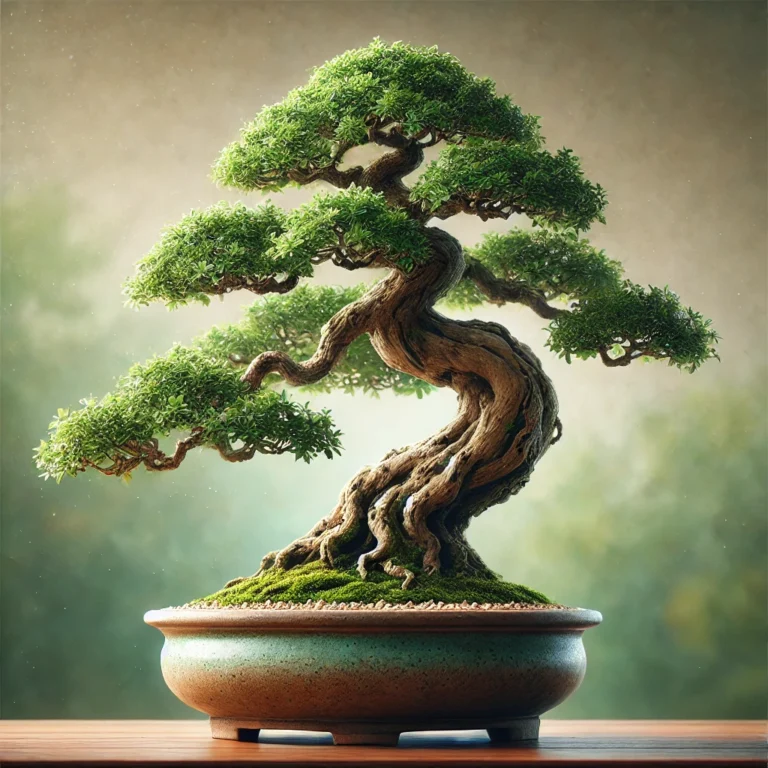🌲 Monkey Puzzle Tree Bonsai Care: A Rare and Exotic Addition to Your Collection
Looking for a unique and conversation-starting bonsai tree? The Monkey Puzzle Tree Bonsai (Araucaria araucana) is a prehistoric marvel with sharp, spiraled leaves and an architectural shape unlike any other bonsai species.
Native to the forests of Chile and Argentina, this exotic evergreen adds a bold statement to any indoor or outdoor bonsai display.
🧬 What is the Monkey Puzzle Tree Bonsai?
Also known as the Chilean Pine, the Monkey Puzzle Tree is a slow-growing, evergreen conifer with:
- Sharp, scale-like leaves arranged in spirals
- Symmetrical branches with a prehistoric look
- An ancient lineage dating back over 200 million years
The name “Monkey Puzzle” comes from its confusing structure—”even a monkey would struggle to climb it.”
🤔 Why Choose Monkey Puzzle for Bonsai?
✅ Rare and visually striking—a guaranteed centerpiece
✅ Hardy and adaptable to many climates
✅ Slow growth makes long-term shaping easier
✅ Perfect for bonsai enthusiasts seeking something different

🌱 How to Choose and Pot a Monkey Puzzle Bonsai
- Select a young, healthy tree with a strong central leader and balanced branches.
- Use a shallow bonsai pot with excellent drainage.
- Spread roots gently—avoid tangles that stunt growth.
Best Soil Mix:
🔸 1 part akadama
🔸 1 part pumice
🔸 1 part lava rock
Recommended mix: Best bonsai soil for conifers →
💧 Soil, Watering, and Humidity
- Water deeply, then allow soil to dry slightly.
- Avoid soggy roots—this species is prone to root rot.
- Humidity: Moderate. Mist occasionally, especially in dry climates.
Tip: Use a humidity tray indoors →
☀️ Light and Temperature Needs
- Requires full sun for 6+ hours per day.
- Grows best in bright outdoor conditions or under strong grow lights indoors.
Temperature Tolerance:
- Handles cold winters and warm summers
- Avoid extreme wind and rapid temperature changes
Ideal Range: 40°F to 85°F (5°C to 30°C)
✂️ Pruning and Shaping Tips
- Prune in late winter or early spring before new growth appears.
- Trim dead, crossing, or weak branches.
- Use wiring sparingly—branches are brittle and may snap.
Tools you’ll need: Best bonsai pruning kits →
🌿 Fertilizing Guide
- Use a balanced, slow-release fertilizer during the growing season (spring to late summer).
- Reduce or pause feeding in fall and winter.
Try this: Top-rated bonsai fertilizer →
🐛 Common Pests and Diseases
While generally pest-resistant, look out for:
| Pest | Symptoms | Treatment |
| Aphids | Sticky residue, distorted tips | Neem oil or insecticidal soap |
| Spider Mites | Fine webs, yellowing leaves | Increase humidity, spray neem |
| Scale Insects | Small bumps on branches | Remove manually + horticultural oil |
Most Common Disease:
Root rot from overwatering. Always ensure well-draining soil and proper watering technique.
🗓️ Seasonal Care
| Season | Watering | Fertilizer | Tips |
| Spring | Increase watering | Start fertilizing | Begin pruning and training |
| Summer | Water frequently | Fertilize every 3-4 weeks | Provide partial shade in extreme heat |
| Autumn | Reduce watering | Stop feeding mid-fall | Prep for dormancy |
| Winter | Minimal water | No fertilizer | Protect from frost and cold wind |
♻️ Repotting Your Bonsai
- Repot every 2–3 years (early spring is best).
- Trim 25–30% of the root mass.
- Use fresh bonsai soil and re-anchor the tree securely.
🌱 Propagation Methods
From Seed:
- Soak seeds for 24 hours
- Plant in bonsai mix and keep moist
- Germination may take weeks or months
From Cuttings:
- Take semi-hardwood cuttings in summer
- Dip in the rooting hormone and plant in moist substrate
- Keep in a warm, humid environment
Note: Monkey Puzzle propagation is slow and requires patience.
🖼️ Displaying Your Monkey Puzzle Tree Bonsai
- Indoors: Place on a bonsai stand or near a bright window.
- Outdoors: Use a raised display shelf to protect and showcase its form.
Idea: Add a backdrop of stones or moss for natural aesthetics.
🧘 Benefits of Growing This Unique Tree
- A great conversation starter for guests and gardeners alike
- Encourages patience, mindfulness, and daily care
- Adds a rare and exotic flair to your bonsai collection
✅ Conclusion
The Monkey Puzzle Tree Bonsai is a one-of-a-kind addition to any collection. Its architectural form, prehistoric lineage, and slow-growing nature make it a rewarding challenge for bonsai lovers at any level.
Whether you’re looking for a striking visual centerpiece or a unique tree to cultivate for decades, the Monkey Puzzle Bonsai is a tree that delivers beauty, depth, and intrigue.
👉 Ready to get started?







